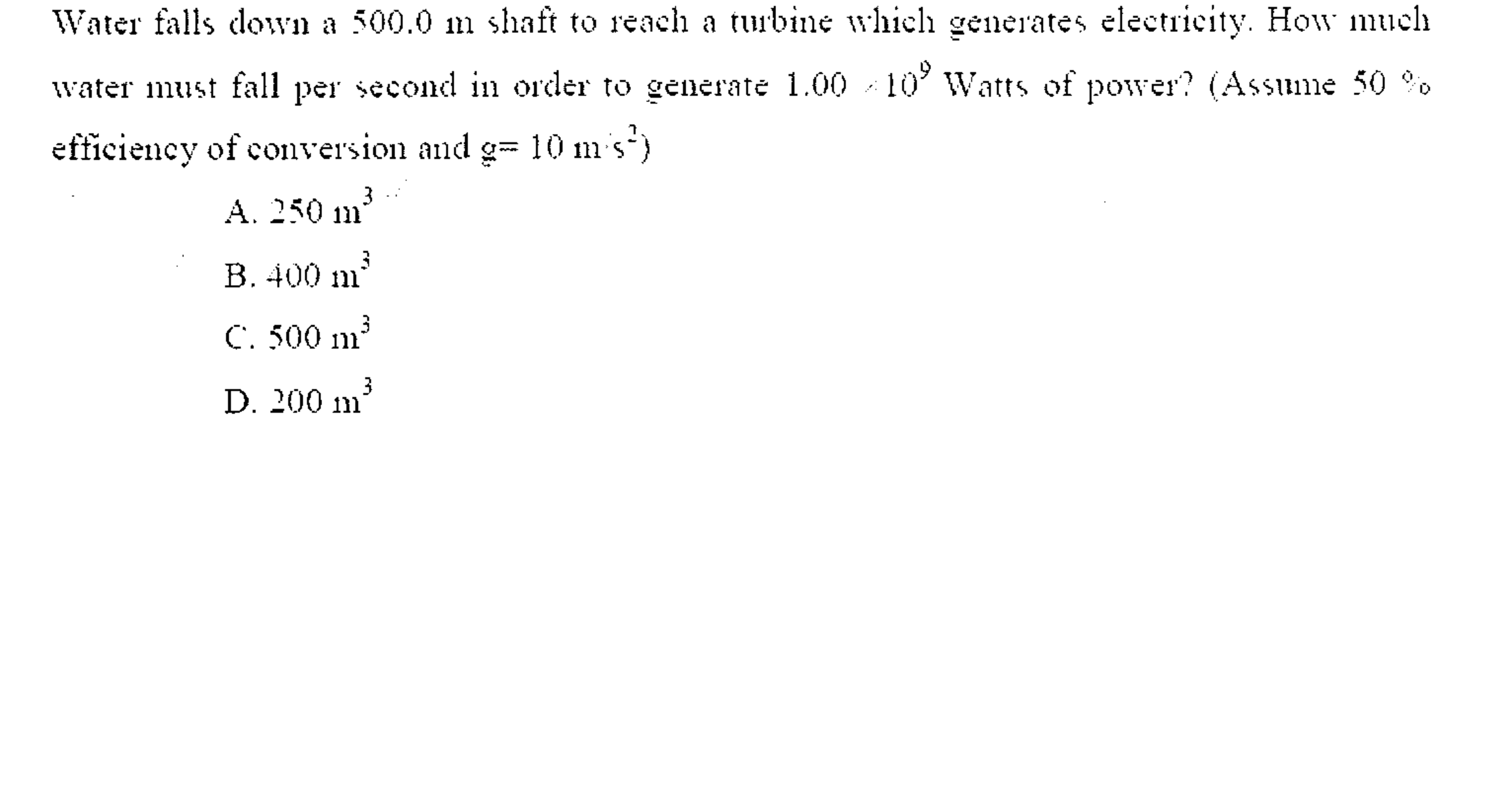This section requires Javascript.
You are seeing this because something didn't load right. We suggest you, (a) try
refreshing the page, (b) enabling javascript if it is disabled on your browser and,
finally, (c)
loading the
non-javascript version of this page
. We're sorry about the hassle.

Efficiency of conversion ( η ) = Power given Power produced × 1 0 0 %
In this case
5 0 = P 1 0 9 × 1 0 0 ⟹ P = 2 × 1 0 9 W
So 2 × 1 0 9 W of power must be given by the falling water per second which also further implies that falling water should do an amount of work equal to 2 × 1 0 9 J on the turbine per second. Thus
W = F ⋅ s ⟹ 2 × 1 0 9 = m g s ⟹ 2 × 1 0 9 = m × 1 0 × 5 0 0 ⟹ m = 5 × 1 0 3 2 × 1 0 9 ⟹ m = 4 × 1 0 5 ⟹ V ρ water = 4 × 1 0 5 ⟹ V × 1 0 3 = 4 × 1 0 5 ⟹ V = 4 0 0 m 3